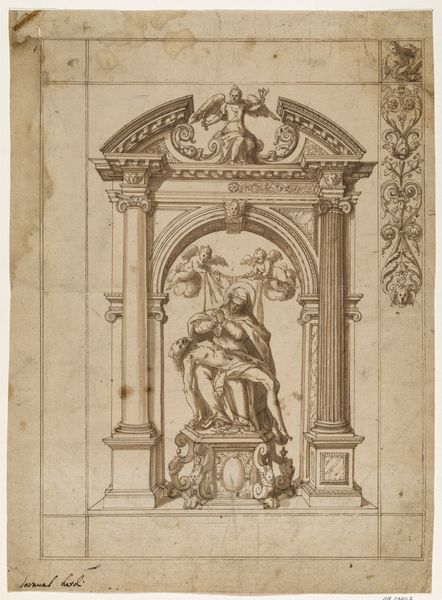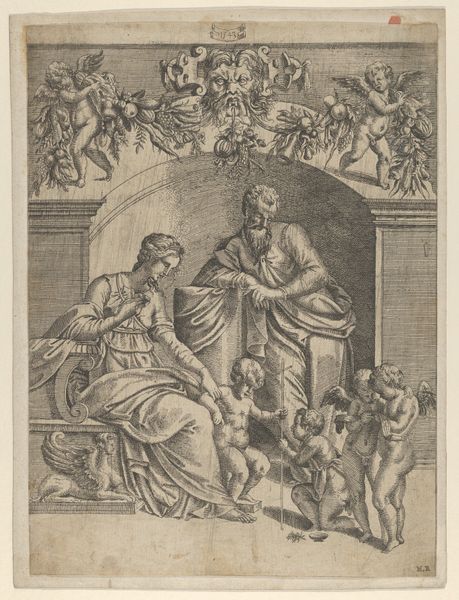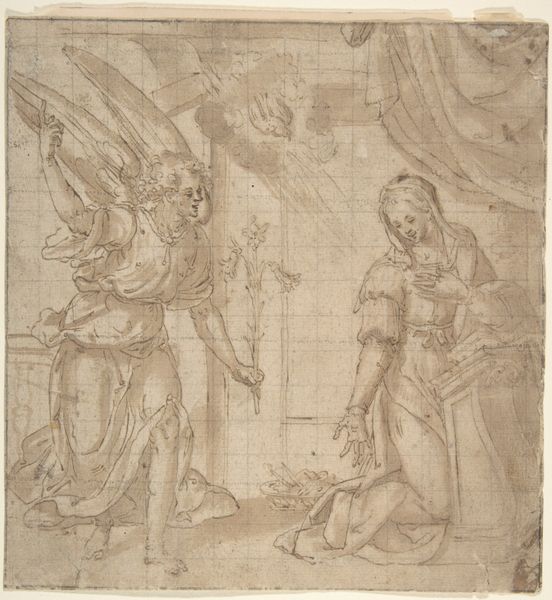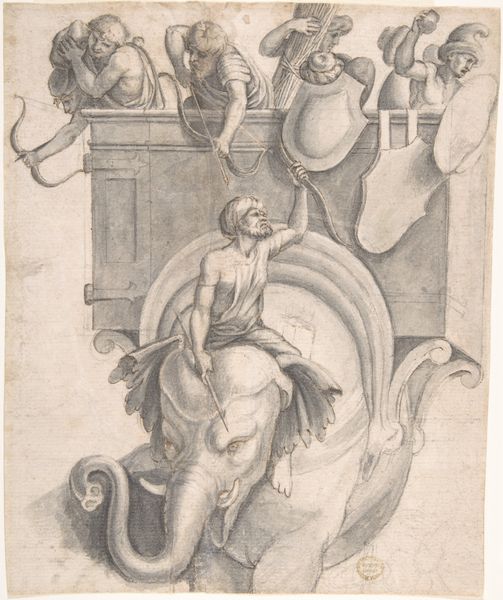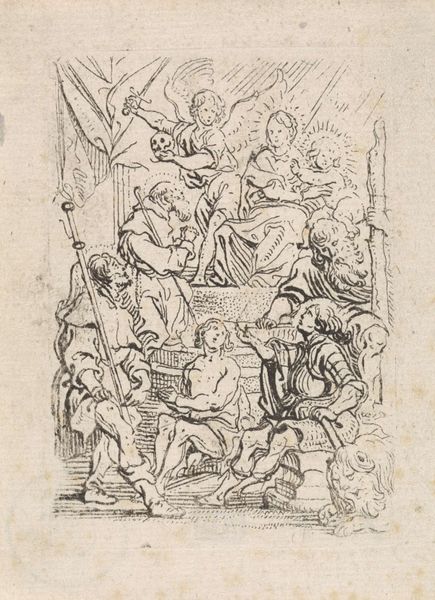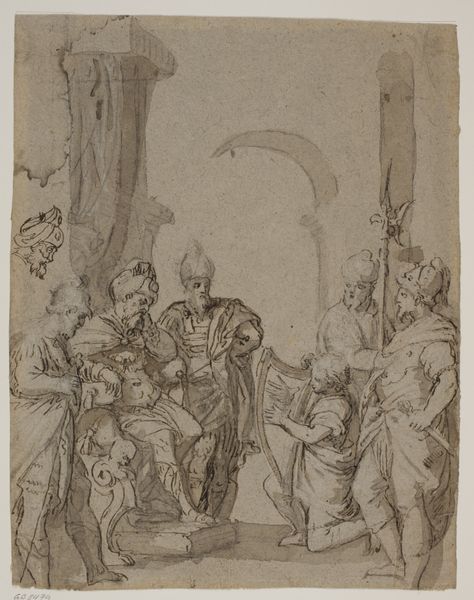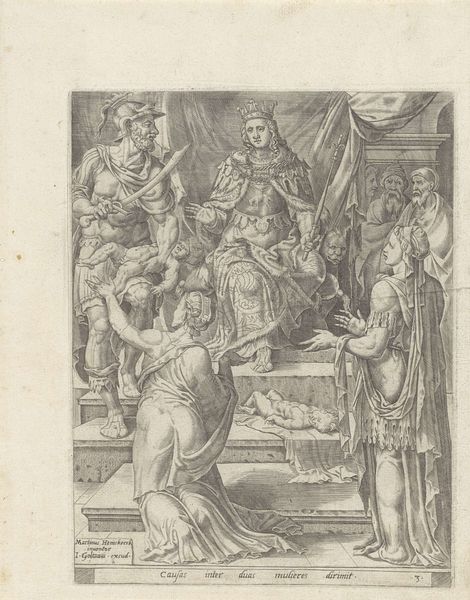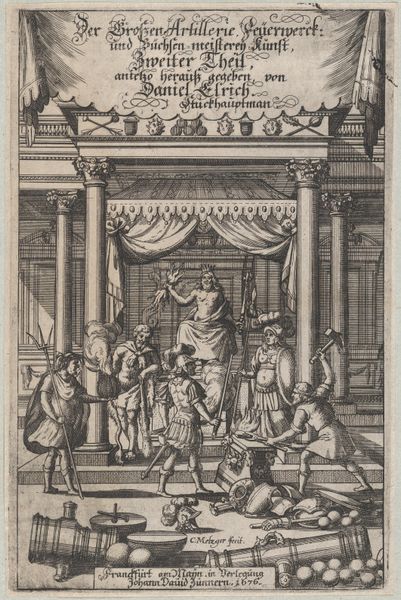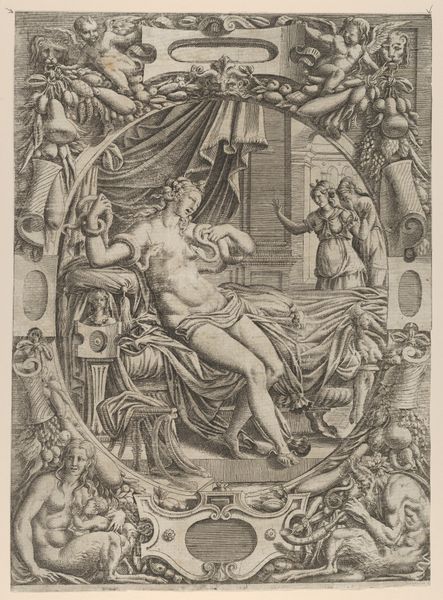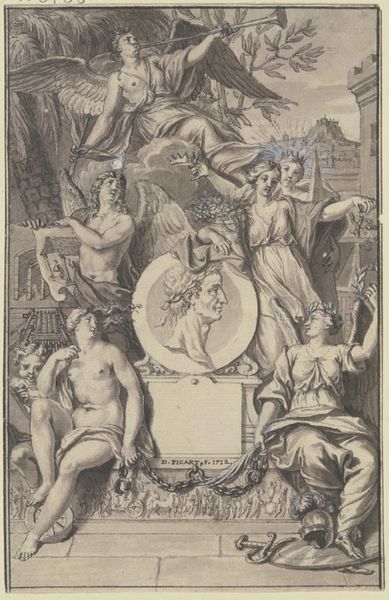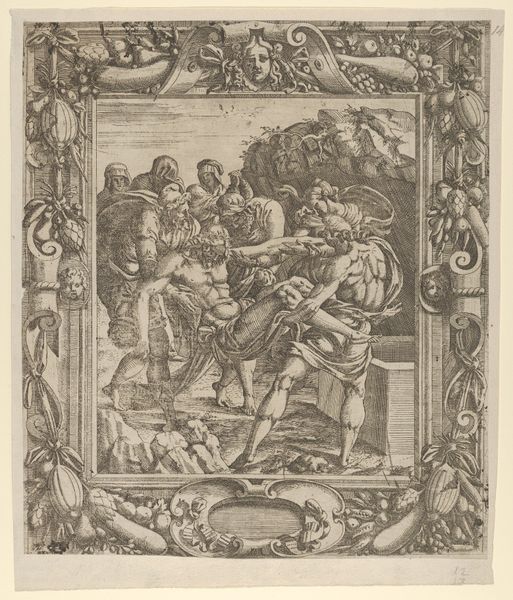
Mucius Scaevola Burning off his Hand before Porcenna 1500 - 1600
0:00
0:00
drawing, print, pencil
#
drawing
# print
#
pencil sketch
#
figuration
#
coloured pencil
#
pencil
#
history-painting
#
academic-art
Dimensions: 7 x 5-11/16 in. (17.8 x 14.4 cm)
Copyright: Public Domain
Curator: Looking at this drawing, I immediately feel a sense of constrained drama, of violence depicted with academic precision. The gray pencil sketch almost mutes the visceral scene. Editor: And it's quite a scene! We're looking at an artwork attributed to an anonymous artist, likely created sometime between 1500 and 1600. It's titled "Mucius Scaevola Burning off his Hand before Porcenna", now residing at the Metropolitan Museum of Art. The medium appears to be primarily pencil, with potential touches of colored pencil. It vividly presents a pivotal moment from Roman history, revealing cultural memory and ideals. Curator: Exactly! Mucius Scaevola, a Roman hero, voluntarily thrusting his right hand into a fire to demonstrate his resolve to the Etruscan king Lars Porsena, whom he had attempted to assassinate. This resonates profoundly. It depicts stoicism and loyalty to one’s own ideals, even in the face of brutal consequences. The act becomes a symbolic offering. Editor: But I think it also reveals the precarious construction of the hero within Roman society. Mucius’s defiance comes with a theatrical flourish intended to destabilize the perceived authority of the king and, importantly, assert Roman resilience and sovereignty, wouldn't you agree? Curator: Indeed. Note how the artist renders Porsena, enthroned above, hand extended either in judgment or disbelief. It is fascinating how the symbols of power interplay with the physical, almost masochistic, display of courage and conviction on the part of Scaevola. I’m particularly drawn to the grim determination etched into Scaevola’s features versus the relatively bland or generically authoritative expression on Porsena. Editor: Right, and framing this through a modern lens, we can consider how such acts of defiance become romanticized in the theater of politics and war. Is Scaevola's sacrifice truly about devotion to Rome or a performance crafted to manipulate the narrative? I'm more cynical here, I suspect. The artist clearly intended to convey a sense of patriotism. However, doesn't the performance raise some interesting ethical questions about its intention and overall societal effect? Curator: It's an intersection we cannot ignore, definitely. His gesture is timeless in its symbolic power—a figure choosing pain, sacrifice, to convey unwavering dedication. Thank you for bringing forward a needed interpretation that sheds light on this dimension of this drawing! Editor: Likewise, your identification of those iconographic roots helps contextualize the historical period and origin from which this form of symbolic language originated, allowing us to read a scene such as this with insight. Thank you for joining this deep dive with me!
Comments
No comments
Be the first to comment and join the conversation on the ultimate creative platform.
